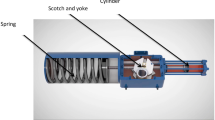Abstract
This paper discusses the root causes and operational mitigations of corrosion anomalies reported for the wet gas system of a floating production storage and offloading (FPSO) vessel. This system is classified in general into the flowing and dead leg sections and operated below 62 °C, where a protective FeCO3 film will not form. Corrosion which is temperature dependent is general. The root cause of the anomalies in the flowing wet gas system was found to be due to CaN and solid deposition in the LP separator, increasing levels of corrosive condensate, which drips down the pipe walls, resulting in wall losses of less than 50%. Evacuation of deposits in the LP separator and subsequent control of its formation rate would mitigate anomalies attributed to increasing levels of corrosive condensates. The corrosion pattern at elbows, modified by turbulent flow of emergent fluid streams through the complex-geometry elbows, is mitigated by velocity control. The root cause of the inspection anomalies at dead leg locations was due to the lifting of the PSV and/or infrequent flow through a bypass valve and directly to flare. Infrequent transportation of condensed, corrosive water thereby resulted in dead leg corrosion. Proposed mitigation entails replacement of defective PSVs and modifying flow frequencies. This paper summarizes all the identified root causes and proposed mitigations and provides a greater understanding of the internal degradation mechanisms operating in wet gas systems in general.










Similar content being viewed by others
References
S. Fengmei, A model developed to predict the internal corrosion rates of wet and dry gas pipelines, in CORROSION 2011, 13–17 March, Houston, Texas (2011)
R. Nyborg, CO2 corrosion models for oil and gas production systems, in CORROSION 2010, 14–18 March, San Antonio, Texas, NACE-10371 (2010)
R. Nyborg, Top of line corrosion and water condensation rates in wet gas pipelines, in CORROSION 2007, 11–15 March, Nashville, Tennessee (2007)
Y.H. Sun et al., Corrosion under wet gas conditions, in CORROSION 2001, Paper No. 01034 (2001)
Y.H. Sun et al., CO2 corrosion in wet gas pipelines at elevated temperature, in NACE Conference Paper—2002, Paper No 02281 (2002)
M. Swidzinski et al., Corrosion inhibition of wet gas pipelines under high gas and liquid velocities, in CORROSION 2000, Paper No 00070 (2000)
Guidance for corrosion management in oil and gas production and processing. Energy Institute, Oil & Gas UK (2008)
Author information
Authors and Affiliations
Corresponding author
Rights and permissions
About this article
Cite this article
Ifezue, D. Root Cause Failure Analysis of Corrosion in Wet Gas Piping. J Fail. Anal. and Preven. 17, 971–978 (2017). https://doi.org/10.1007/s11668-017-0336-x
Received:
Published:
Issue Date:
DOI: https://doi.org/10.1007/s11668-017-0336-x




